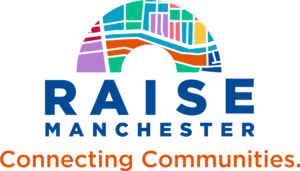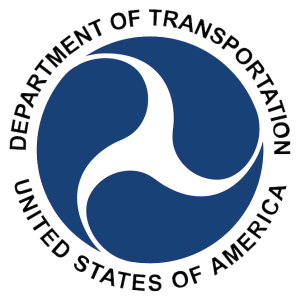HAVE QUESTIONS?
Here Are The Most Frequently Asked Questions.
RAISE Manchester is a $30 million investment in making Manchester’s Downtown and Millyard transportation and pedestrian corridors safer, more walkable, bikeable and less congested, while creating opportunities for future growth.
Between four projects, which all work in tandem with one another, sections of the city that are today cut off from one another will be reconnected east to west and north to south.
The four main components of RAISE Manchester: Connecting Communities are:
- A new pedestrian bridge over Granite Street to connect Commercial and South Commercial streets.
- A new roadway called “South Commercial Street Extension” and multimodal bridge over the CSX railroad tracks behind the Delta Dental Stadium to improve the connection between the east and west sides of the tracks, alleviate traffic congestion on Granite Street during peak times and provide alternative access to Elm Street. This will also include a shared-use path for cyclists and pedestrians.
- A new roadway connector and multimodal bridge called “Gas Street Extension” between where South Commercial Street Extension meets Elm Street that will cross over the abandoned railroad right-of-way to Willow Street. In conjunction, the city will convert the railroad right-of-way to a paved rail trail for bicycle and pedestrian use.
- A “peanut roundabout” at the South Willow Street and Queen City Avenue intersection, replacing a signalized intersection, to improve mobility and safety at this location.
See more details here.
The overall benefits of the RAISE Manchester project include enhanced mobility, reduced traffic congestion, increased safety for motorists, cyclists and pedestrians, decreased transportation costs, more access for public safety vehicles, greater connectivity between different city districts, expanded access to job opportunities, more opportunities for traditionally underserved communities, improved walkability and placemaking and new opportunities for economic development. It will also fill key gaps in the Granite State Rail Trail.
This transportation infrastructure will lay the groundwork for Manchester’s Transit-Oriented Development (TOD) Plan, which will include new building construction and the redevelopment of existing buildings to create 785,000 square feet of office space, 198,000 square feet of retail space, 1,802 Residential units and 154 hotel rooms. The overall opportunity represents 2.9 million square feet total gross floor area at 60% build-out, and a $588.7 million total development value.
The benefits of the Granite Street Pedestrian Bridge include improved safety for pedestrians crossing seven lanes of dense urban traffic, safer access to places of employment, like SNHU or WMUR, events like Fisher Cats stadium and the SNHU Arena, and the Hilton Garden Inn hotel. It will feature fully accessible ramp access, improved signal operations and reduced emissions from idling vehicles. Pedestrian traffic at this intersection is steadily increasing to about 600 people per day, according to a recent study.
See more details here.
The benefits of the South Commercial Street Extension include a major reconnection between the east and west sides of the active CSX rail line with a multi-modal bridge for drivers, bicyclists and pedestrians. This will reduce traffic congestion on Granite Street, including the Interstate 293 interchange, during peak hours and will avoid gridlock caused by train crossings. The additional egress will cut emergency response times to the South Millyard, provide greater access to transportation options for traditionally underserved communities, enhance the value of approximately 5.4 million square feet of underutilized parcels and install modern, nature-based stormwater infrastructure.
See more details here.
The benefits of the Gas Street Extension include additional traffic flow alternatives that connect Downtown and the Millyard to South Willow Street with construction of a bridge over the abandoned railroad corridor, and improved flow from interconnected traffic signals on Elm Street. It will clean up a fallow section of abandoned rail, which has become a hidden zone of undesirable behavior, and pave the rail trail path for pedestrians and bicyclists to enjoy. This 0.68 miles of rail trail will be a key piece in completing the 120-mile Granite State Rail Trail from Lebanon to Salem.
See more details here.
The benefits of the South Willow/Queen City Intersection include improved safety from reduced speeds, improved freight operations from eliminating signal delay, reduced emissions from idling vehicles and additional bike lanes and sidewalks. Currently there are no pedestrian crossings at this intersection.
See more details here.
The final design and permitting process began in late 2023 for all four project elements. The design of each project element is scheduled for completion by September 2024, at which time the project will be ready for construction bid solicitation. All construction will be completed by September 2029.
The United States Department of Transportation awarded the city a Rebuilding American Infrastructure with Sustainability and Equity (RAISE) grant of $25 million for this project. The City of Manchester is also committing $5 million to the project’s final design and construction.
Many of the central ideas embodied in the RAISE Manchester project harken back to the city’s 2006 Downtown Strategic Development plan and were also articulated more recently in the 2021 Manchester Master Plan.
Between 2017 and 2020, multiple studies, initiatives, brainstorming sessions and public charrettes have culminated in the recommendations that the RAISE Manchester plan incorporates. The plan is the result of hundreds of residents and other stakeholders and enjoys broad support.
The U.S. Department of Transportation awarded the $25 million RAISE grant in November 2021. The funds awarded were the highest possible under the grant program.
The project will complete a critical connection at the center of Manchester providing connectivity between the Rockingham Recreational Trail, to the Piscataquog Rail Trail, and the South Manchester Rail Trail to the Riverwalk. See a map here.
Yes. In fact, one of the key missions of this project is to ensure modes of transportation other than motor vehicles, including pedestrians and bicyclists, are offered the same level of connectivity created by the new roads. There will be pedestrian- and bike-accessible sidewalks on two new roads and bridges (South Commercial Street Extension and Gas Street Extension) and at the redesigned intersection of South Willow Street and Queen City Avenue, a new ADA-compliant pedestrian bridge over Granite Street and the project will complete a critical connection at the center of the City of Manchester Rail Trail network.
You can view a map of the bicycle network connections here, and a map of the pedestrian network connections here.
Yes, the new signals that will be installed at the Granite Street intersection will be upgraded to detect bicyclists in addition to motorists.
A shared-use path is a two-way, curbed path along a roadway that is wider than a standard sidewalk and prioritizes safety and usability. They are designed to provide enough space for pedestrians and cyclists to navigate the path at the same time. Conversely, sidewalks that are no wider than six feet are generally limited to pedestrian use, with a few exceptions.
RAISE Manchester features multiple new shared-use paths, with the widest being 12 feet. This is the same width as most rail trails. The proposed shared-use paths are also fully ADA compliant.
Yes, the pedestrian infrastructure, including the new pedestrian bridge over Granite Street, will be fully accessible, in compliance with the Americans with Disabilities Act (ADA).
No. All the proposed new roadways are possible without any impacts to existing buildings.
No businesses will be closed or negatively impacted by the construction of the project. In fact, the new infrastructure is expected to boost the local economy and spur new development as residents gain greater access to the southern part of downtown and the South Millyard area.
Yes. You can send us your questions and comments here, or you can attend public meetings, which will be announced on this site and through other channels. You may also call and leave a voice message at (603) 212-5107.




